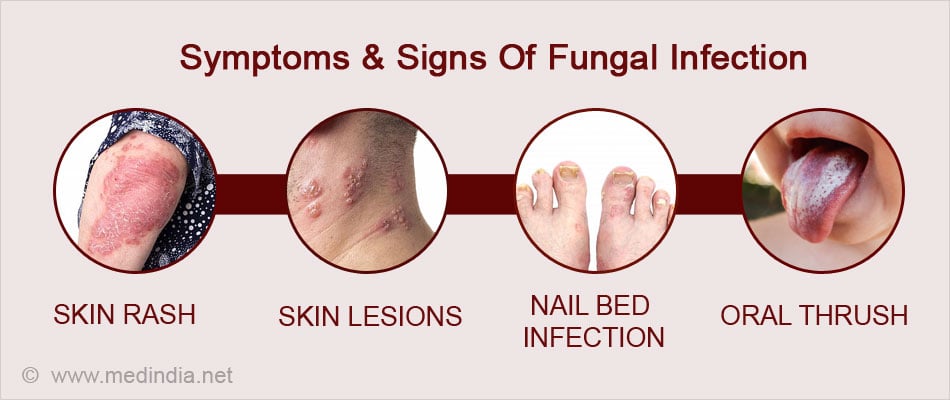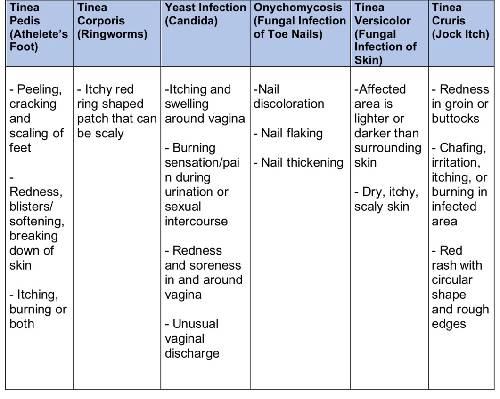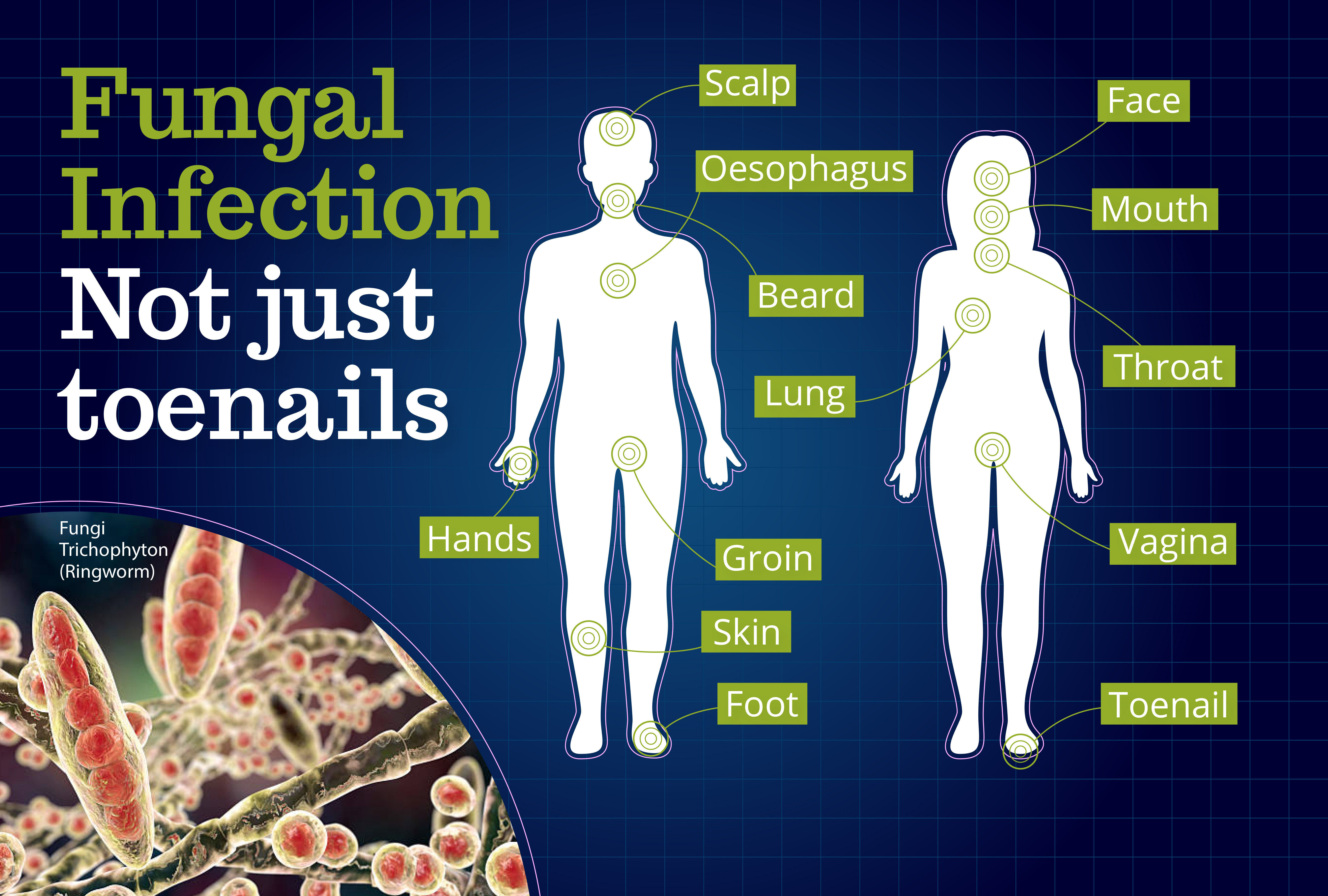Solution for Name and describe one of the subgroups of fungus-like protists that you read about. Rigidoporus corticola is a white-rot decay fungus of plants and is widely distributed in North America and Europe.

Fungal Infections Causes Symptoms Diagnosis Treatment Prevention
The fungi comprise a diverse group of organisms that are heterotrophic and typically saprozoic.

. Flaking or cracking skin. Leaf rust common leaf rust in corn Stem rust wheat stem rust Sclerotinia white mold Powdery mildew. Common nail diseases include nail psoriasis fungal infections paronychia and more.
Papiliotrema laurentii and Naganishia albida both formerly referred to Cryptococcus have been known to occasionally cause moderate-to-severe disease in human patients with compromised immunity. Candida are yeast that can be found on the skin mucous membranes and in the intestinal tract. Some of the fungi are responsible for foliar diseases Downy mildews.
Cryptococcus gattii is endemic to tropical parts of the continent of Africa and Australia and can cause disease in non-immunocompromised people. Name and describe one of the subgroups of fungus-like protists that you read about. It is caused by Cryptococcus a fungus that has been found throughout the world.
And White blister are some of the highly prevalent foliar diseases. In addition to the well-known macroscopic fungi such as mushrooms and molds many unicellular yeasts and spores of macroscopic fungi are microscopic. Invasive fungal infections rarely occur in healthy people but fungi can cause serious infections in individuals with weakened immune systems.
Name two fungal phyla that are active in decomposition. These organisms include fungi bacteria and viruses. Learn about the causes symptoms and treatments for common nail diseases here.
Valley Fever Coccidioidomycosis Español Spanish Valley fever also called coccidioidomycosis is an infection caused by the fungus Coccidioides. Rcorticola is a filamentous basidiomycete in the Agaricomycotina subphylum also known as Oxyporus corticola because no morphologic differences or type species are in the same phylogenetic cladeRigidoporus is the preferred. The most common is Candida albicans.
Candida can cause infections if it grows out of control or if it. The following is a list of some of the major plant diseases grouped by type of causative agent and ordered alphabetically. Fungal disease signs.
Prion disease- A prion has no genetic material and is a protein. The fungus is known to live in the soil in the southwestern United States and parts of Mexico and Central and South America. Therefore on a statistical basis alone you are likely to encounter fungal diseases much more often than those caused by other types of pathogens.
A rash that gets worse when you exercise. Changes in skin color. Fungal infections today are among the most difficult diseases to manage in humans.
Infectious plant diseases are caused by bacteria fungi or viruses and can range in severity from mild leaf or fruit damage to death. Examples of fungal infections are- Candidiasis ringworm histoplasmosis athletes foot etc. Fungal nail infections onychomycosis Parasites.
Some fungi cause disease in healthy people but most fungal infections occur in individuals already experiencing serious illness and frequently jeopardize the success of the newest medical advances in cancer care solid organ and hematopoietic stem cell transplantation neonatal. Fungus is a multicellular parasite that uses an enzyme to observe organic matter. In case the prion is abnormally folded it impacts the brain system.
Fungi live outdoors in soil and on plants and trees as well as indoor surfaces and human skin. The fungus was also recently found in south-central Washington. Valley fever is an infection caused by the fungus Coccidioides.
Some species of Candida can cause infection in people. An infection occurs when an invasive fungus becomes too much for the immune system to handle. Cryptococcus fungi are found in the soil throughout the world and are often associated with.
Fungal meningitis an infection that causes inflammation of the membranes covering the brain and spinal cord is one of the most common life-threatening opportunistic infections of HIV patients. We describe the most common types. Candida normally lives on the skin and inside the body in places such as the mouth throat gut and vagina without causing any problems.
Sclerotinia and Sclerotium species are soilborne diseases. Candidiasis is a fungal infection caused by a yeast a type of fungus called Candida. For this reason fungi are included within the field of microbiology.
Learn more about each of these five main categories as well as a recently discovered one. The scientific name for Valley fever is coccidioidomycosis and its also sometimes called San Joaquin Valley fever or desert rheumatism. Infections in people are acquired by inhalation of small fungal cells spread on air currents.
Some examples of common fungal infections are. We will now proceed to a description of the main characteristics of fungi. Fungal infection generally develops on the upper layers of the skin.
Fungal diseases are caused by a wide variety of fungi that are commonly found in the environment. Three of these potentially pathogenic ie disease causing fungi include Histoplasma capsulatum causes histoplasmosis Blastomyces dermatitidis causes blastomycosis and Coccidioides immitis causes coccidioidomycosis. But fungi protozoa and helminths are also big players in the story of infectious disease.
Solution for Describe two ways in which fungal spores arise. Common jock itch symptoms include. Fungal Disease-Specific Research Candidiasis.
About 85 of all plant diseases are caused by fungi. The term Valley fever usually refers to Coccidioides infection in the lungs but the infection can spread to other parts of the body in severe cases this is called. Other fungi Clubroot.

Fungal Infection Not Just Toenails Blueberry Therapeutics

0 Comments